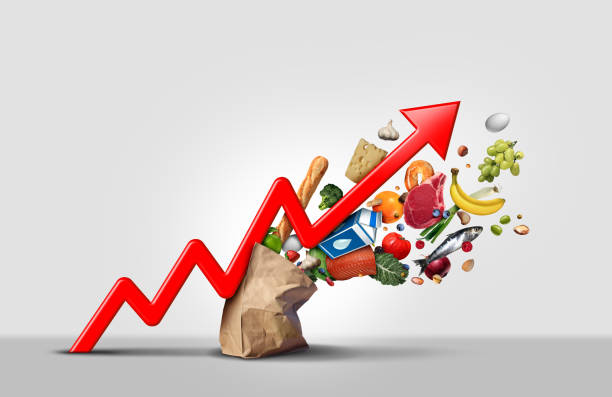Explanation Of Price Hike Concept
Price hike refers to the increase in prices of goods and services over a period of time. It occurs due to various factors such as rising production costs, increased demand, changes in government policies, and currency fluctuations. The concept of price hike is important to understand as it affects both consumers and businesses.
Importance Of Discussing Price Hikes
Discussing price hikes is crucial because it helps individuals and businesses prepare and adapt to the changing economic conditions. By understanding the factors leading to price hikes and their impact, we can take proactive measures to cope with the challenges and minimize any negative consequences.
Factors Leading To Price Hikes
Rising Production Costs
Factors such as increasing wages, raw material costs, energy prices, and transportation expenses can lead to higher production costs, which are often passed on to consumers in the form of price hikes.
Increased Demand For The Product/Service
When demand surges, businesses may raise prices to balance supply and demand. This often occurs during periods of economic growth or when a product is in high demand due to factors such as a popular trend or limited availability.
Changes In Government Policies Or Regulations
Government policies and regulations can impact the cost of production, distribution, and sales. For example, changes in tax rates, import/export duties, or environmental regulations can influence prices.
Currency Fluctuations Affecting Imports/Exports
When the exchange rate between currencies fluctuates, it can impact the cost of imported goods and services. As a result, businesses may increase prices to compensate for the higher costs or reduced profitability.
Impact Of Price Hikes On Consumers
Increased Financial Burden On Individuals And Households
Price hikes can strain the budgets of individuals and households, reducing their purchasing power and causing financial stress.
Changes In Consumption Patterns
Consumers may adjust their spending habits when prices increase, opting for lower-priced alternatives or reducing their overall consumption.
Potential Decrease In Quality Or Quantity Of Purchased Goods/Services
To maintain profit margins, businesses may cut costs by reducing the quality or quantity of their offerings, leading to a decline in product satisfaction for consumers.
Negative Effects On Individuals With Fixed Incomes Or Low Wages
Individuals on fixed incomes or those with low wages may struggle to afford essential goods and services when prices rise, potentially leading to financial hardship.
Impact Of Price Hikes On Businesses
-
Higher Input Costs Affecting Profit Margins
Businesses experience reduced profit margins when they face higher costs for inputs such as raw materials, labor, or transportation.
-
Potential Reduction In Sales Volume Due To Increased Prices
As prices rise, consumers may opt for cheaper alternatives or reduce their overall consumption, leading to a potential decline in sales volume for businesses.
-
Possible Negative Effects On Customer Loyalty And Brand Reputation
When prices increase, customers may perceive businesses as being less loyal or greedy, which can damage customer loyalty and harm brand reputation.
-
Challenges In Managing Customer Complaints And Dissatisfaction
Customer dissatisfaction and complaints often arise when prices rise. Businesses must address these concerns effectively to maintain customer satisfaction and loyalty.
Strategies To Cope With Price Hikes
Cost-Cutting Measures Within Businesses
Businesses can implement cost-cutting measures such as optimizing operational processes, negotiating better deals with suppliers, or reducing discretionary expenses to mitigate the impact of price hikes.
Diversifying Product/Service Offerings
Expanding product or service offerings can help offset the impact of price hikes by providing consumers with a wider range of options across different price points.
Implementing Price Differentiation Strategies
Businesses can introduce pricing strategies that differentiate prices for different customer segments, allowing them to target both price-sensitive and premium customers.
Enhancing Value Proposition And Customer Experience
By focusing on providing a superior value proposition and excellent customer experience, businesses can justify their prices and retain customer loyalty even in the face of price hikes.
Government Intervention To Mitigate Price Hikes
-
Price Control Mechanisms
Governments can implement price control mechanisms to regulate the maximum prices that businesses can charge for essential goods and services, ensuring affordability for consumers.
-
Regulation Of Monopolistic Practices
Governments can enforce regulations to prevent monopolistic practices that may lead to excessive pricing, ensuring fair competition and protecting consumers from exploitation.
-
Fiscal Policies To Support Businesses And Consumers
Governments can implement fiscal policies such as tax incentives or subsidies to support businesses and consumers during times of price hikes, easing the financial burden.
-
Consumer Education On Price Comparison And Smart Purchasing
Governments can educate consumers on techniques for comparing prices, making informed purchasing decisions, and leveraging discounts or promotions to minimize the impact of price hikes.
Conclusion
In conclusion, price hikes are a complex phenomenon driven by various factors that have significant impacts on both consumers and businesses. By understanding and discussing price hikes, we can better prepare ourselves to cope with the challenges they present.
It is important for individuals and businesses alike to adapt and persevere in the face of price hikes. By implementing strategies to cope with price hikes and advocating for government intervention, we can mitigate the negative consequences and strive for economic stability and growth.
Call To Action For Individuals And Businesses To Adapt And Persevere In The Face Of Price Hikes.
Individuals can explore cost-saving measures, such as budgeting, comparison shopping, and finding alternatives. Businesses can focus on efficiency, innovation, and maintaining customer relationships. Together, we can navigate the impact of price hikes and work towards a resilient and sustainable economy.

